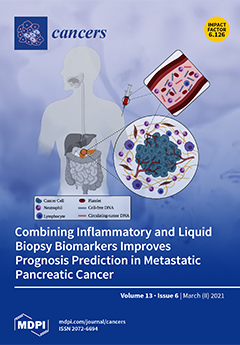We aimed to determine the mechanism of epithelial–mesenchymal transition (EMT)-induced stemness in cancer cells. Cancer relapse and metastasis are caused by rare stem-like cells within tumors. Studies of stem cell reprogramming have linked
let-7 repression and acquisition of stemness with the EMT factor,
[...] Read more.
We aimed to determine the mechanism of epithelial–mesenchymal transition (EMT)-induced stemness in cancer cells. Cancer relapse and metastasis are caused by rare stem-like cells within tumors. Studies of stem cell reprogramming have linked
let-7 repression and acquisition of stemness with the EMT factor,
SNAI1. The mechanisms for the loss of
let-7 in cancer cells are incompletely understood. In four carcinoma cell lines from breast cancer, pancreatic cancer, and ovarian cancer and in ovarian cancer patient-derived cells, we analyzed stem cell phenotype and tumor growth via mRNA, miRNA, and protein expression, spheroid formation, and growth in patient-derived xenografts. We show that treatment with EMT-promoting growth factors or
SNAI1 overexpression increased stemness and reduced
let-7 expression, while
SNAI1 knockdown reduced stemness and restored
let-7 expression. Rescue experiments demonstrate that the pro-stemness effects of
SNAI1 are mediated via
let-7. In vivo, nanoparticle-delivered siRNA successfully knocked down
SNAI1 in orthotopic patient-derived xenografts, accompanied by reduced stemness and increased
let-7 expression, and reduced tumor burden. Chromatin immunoprecipitation demonstrated that
SNAI1 binds the promoters of various
let-7 family members, and luciferase assays revealed that
SNAI1 represses
let-7 transcription. In conclusion, the
SNAI1/
let-7 axis is an important component of stemness pathways in cancer cells, and this study provides a rationale for future work examining this axis as a potential target for cancer stem cell-specific therapies.
Full article






